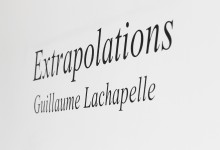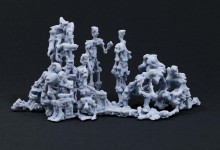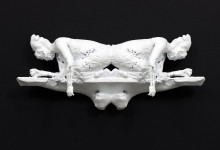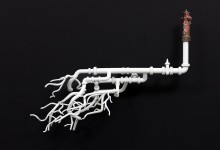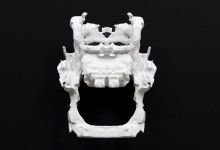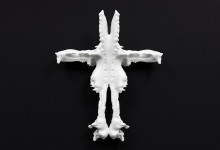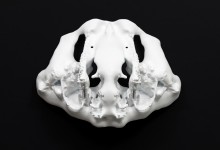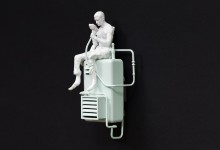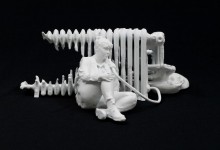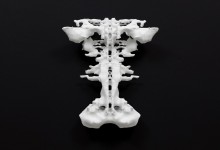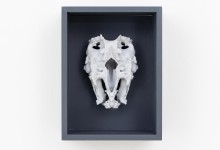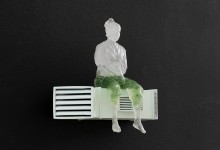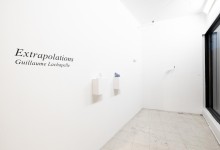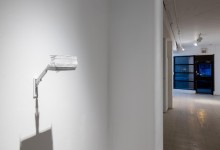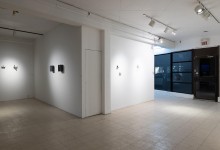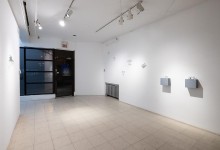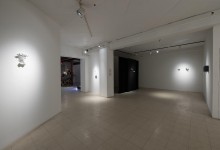Opening reception: Saturday, May 6, 2023 from 3 p.m. to 5 p.m.
Guillaume Lachapelle : Extrapolations
Text by Rebecca Johnson
Guillaume Lachapelle’s work combines the real and the imaginary to create miniature environments and scenarios that showcase connections between humans and their everyday worlds. In Extrapolations, Lachapelle extracts seemingly mundane mechanical objects from a typical cityscape – such as radiators, fire hydrants, and balconies – and manipulates their appearance by creating 3D printed models that visually oscillate between the magical and the monstrous.
In some of his sculptures, Lachapelle uses photogrammetry – a method that scans a series of two-dimensional photographs or images to create three-dimensional models. While photogrammetry typically enables real-life objects to be accurately reproduced, the artist challenges this paradigm by tampering with the machine’s process, both by accepting the machine’s glitches and by triggering them. When scanning images, the results may not always be what is anticipated, however, for Lachapelle it is about welcoming the unknown. In several examples, he encourages the program to read screenshots of images and extrapolates what should be there, filling in blank data with added images and various shapes. The resulting sculptures are symmetrical and geometric, appearing uncannily familiar like human vertebrae, yet unfamiliar in fantastical abstracted forms. The sculptures merge between two different worlds, bridging human and machine through unexpected adaptations to everyday things.
Extrapolations balances between this duality, ultimately reflecting on the increasing dependency humans have on technology in our everyday world. For Lachapelle, this is especially pertinent in a world where technology is continuously developing. The sculptures highlight the dynamic and everchanging relationship between humans and technology, making us question this reliance on technology.
In this exhibition, Lachapelle also introduces the inclusion of human characters back into his art practice. He places people in unnatural and impossible exchanges with machines and technology. For instance, while in past exhibitions, he has usually tried to conceal the electronic components that make moving pieces function, in Extrapolations these are instead brought to the forefront, exposing the wires and thus the mechanical processes to the viewers. We become witnesses to the “behind the scenes,” by being granted visual access to the often invisible. In one of the sculptures, a figure of a woman stands beside an endlessly spinning carousel. Her gaze breaks out above the scene to instead watch the series of wires on the circuit board that make the carousel spin. Just as the viewers see all the wires and circuits, so too does the woman. It encapsulates her attention in a manner that not merely demonstrates humanity’s increasing reliance on technology, but that also induces a fear of being pulled from reality. Overall, this series comments on this fear by reinterpreting natural forms in abstract, whimsical, and unnatural ways.


